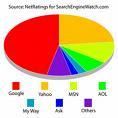You may notice that some of your blog posts are drawing search engine traffic for particular search phrases and keywords (especially if your blog has had some time to establish itself with search engines). Even if you are doing keyword research prior to writing posts, you’ll almost definitely see that some of these phrases that are producing traffic are not something that you had intentionally targeted. While this is a nice surprise, it also means that there is likely more potential if you’re willing to make some small, but significant, tweaks.
If you’re drawing search traffic from a phrase that you’re not targeting, it probably means that you could be ranked even higher, and draw even more traffic as a result, if you make some changes to optimize your post accordingly. Just because a post was published at some point in the past doesn’t mean that it can’t be modified and made to be more effective.
In this post we’ll look at a few simple changes that can be made to improve upon these unintentional rankings. By taking a relatively small amount of time to recognize these opportunities and act on them, you could be setting yourself up for significantly more search engine traffic on an on-going basis.
First of all, you’ll need to find the keywords and phrases that are already driving traffic to your site. These are the search terms that you know are already producing results, so making a small effort to move up in the rankings is well worth your time. If your post is ranked 5th in Google for a particular phrase without even attempting to optimize the page, you may be able to quickly improve to the 1st or 2nd spot and see a noticeable increase in traffic. Repeat this process for a few different posts and the results will add up.
As an example, I have a post on my primary blog that has steadily attracted search traffic for the past six months or so. It’s not a ridiculous amount of traffic each day, but it does come from some fairly competitive search phrases and it is consistent every day, which adds up over the span of a month. I recently spent a few minutes to look into which search phrases were sending traffic to this post and I was surprised to see that I was ranked 4th in Google for a phrase that didn’t seem to be optimized. I made a simple change in just a couple of minutes and within a few days the post had moved to the #1 spot for that same phrase. Since then search traffic has been up consistently for that phrase.
To find these opportunities for your own blog, look at your stats from Google Analytics (or a similar program) and see what search phrases are sending traffic to your site. Most likely these phrases will be leading traffic to a particular post rather than to your homepage, which means you can simply optimize that post to more effectively target the phrases that are already sending traffic. Just look through the phrases that are sending traffic and you’re sure to find some that could be more productive. Personally, I start with the ones that are sending the most traffic since they have potential for the best results.
In addition to looking at Google Analytics, you can also use Google Webmaster Tools. Webmaster Tools will show you some valuable data under “Statistics” and “Top Search Queries.” This will show you 20 phrases where your site is ranking well, and 20 phrases that are sending the most traffic to you. You may find some items on this list that surprise you a little bit. If they surprise you, it probably means that you weren’t intending to draw traffic from these phrases and there should be some room for improvement.
So now that you have identified a few phrases to work with, what should you do? Here are a few simple suggestions.
1. Page Titles
Page titles are the most significant on-page factor for search engine rankings. If your post is ranking very well for a particular phrase that is not exactly used in your page title, you should be able to see some improvement in the ranking if you change your page title to include this phrase. If you’re using WordPress and the All-In-One SEO Pack Plugin this is very easy. From the example that I used earlier, I didn’t remove anything from the existing title, I simply added a two-word phrase that was already producing the search traffic. As a result, with no other effort, that was enough to jump a few spots in the rankings.
2. Add New Internal Links
By adding more internal links to a particular post you will be indicating to search engines that the post is important. This is a pretty simple process, but one that most of us don’t take the time to do. If you’re blog has been around for a while you have plenty of places where you can add internal links. Go back and find posts on related topics and add a link in the content of the page or at the beginning or end of the post. Also, look for opportunities to link from any significant pages on your blog.
3. Change Anchor Text
Another factor that will influence search engine rankings is the anchor text that is used on links that point to that post. You can obviously control the anchor text used on your internal links, so take a few minutes and see what anchor text you are currently using on these links and see if it could be optimized to match the phrase that you are now targeting.
The anchor text of links from other sites to this page will also be significant, but you may or may not be able to change that. In most cases the best you could do is to contact the other blogger or website owner and ask them if they mind changing the anchor text on a particular link. I know some people do this, but I can’t say that I have ever asked someone to change the anchor text on their site for me.
4. Meta Description
While meta descriptions are not going to make a big difference in terms of rankings, an effective description is capable of improving the click-through-rate from the SERPs. For example, if your page is ranking 3rd in Google for a particular phrase, you could enter a description that will do a better job of attracting clicks from those searchers and you may find a 10% in traffic without moving up in the rankings. Again, this is something that you can easily do with the All-In-One SEO Pack Plugin.
5. Add to the Content of the Post
One of the best ways to help a post draw more traffic on an on-going basis is to make the post more useful. Most of us don’t take the time to improve our old posts, but the time can be a good investment in some cases. By making adding new or updated content you will be making the post more useful and hopefully it will attract more links in the future because it continues to be valuable. And more links mean possible improvement in rankings.
6. Write a Follow Up Post
I rarely write posts to target a specific word or phrase, but I did so about a year ago with a post on my primary blog. After a while the post attracted some links and moved up to the number one spot for the targeted phrase. After that I thought it would be nice if I could get a second post to rank well for that phrase, so I published a follow up. Since my site was already recognized by Google as a good source of information for this phrase it was pretty easy to get a second post to rank for the same phrase. Before long I had the first two spots in Google for the phrase pointing towards my two posts.
If you have a page that is ranked very high, this is a very achievable way to grab an even higher share of the traffic for this phrase. However, most of us (including me) rarely think to do this. Take a look at your posts that are ranking well, most likely you’ll find some opportunities where you could write a follow up post to target the same phrase.
Reminder:
One thing that should be pointed out here is that any changes made can also affect your rankings for that post and other search phrases. So if the post is already ranking well for your targeted phrase and you see another phrase that also is sending some traffic, you won’t want to abandon the targeted phrase by making changes that will be counterproductive.
Friday, April 24, 2009
Subscribe to:
Post Comments (Atom)






























No comments:
Post a Comment